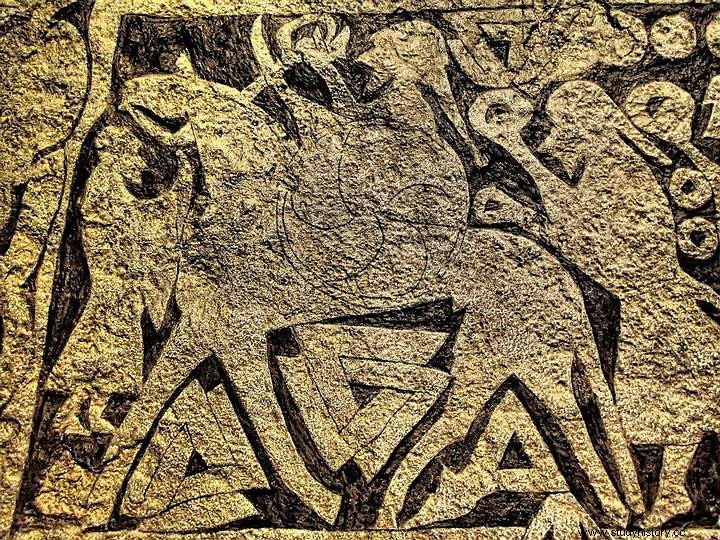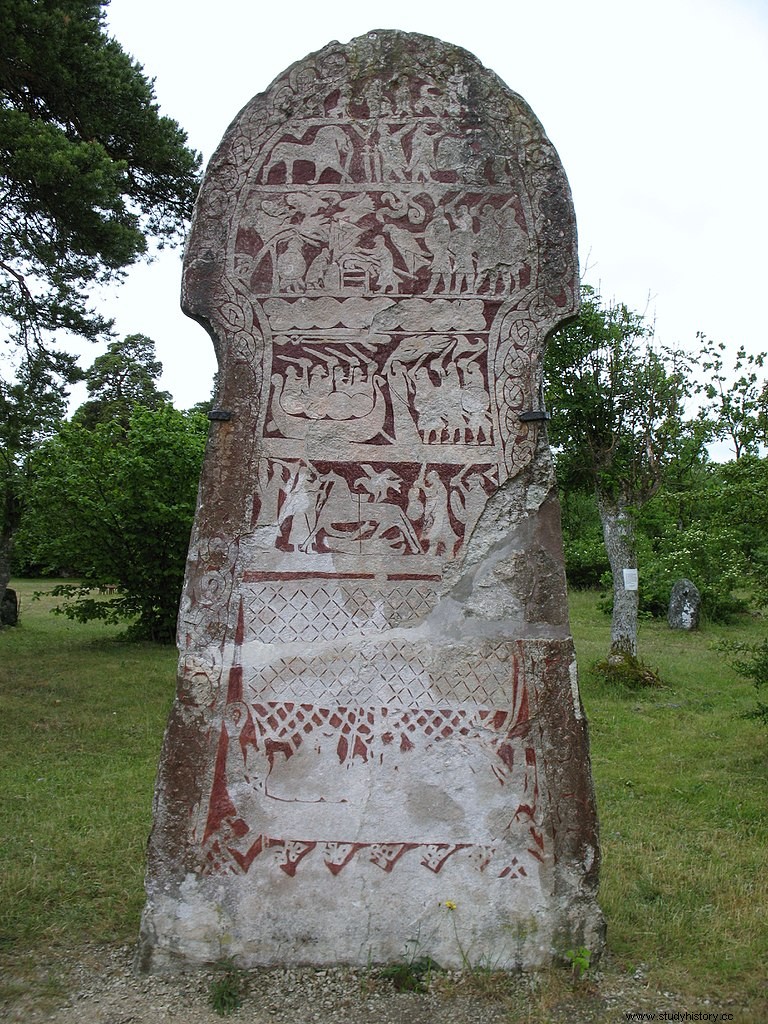Although today it is sadly famous for its appropriation and use by some supremacist groups, the truth is that the Valknut Nordic seems to be more related to religion and funeral rites than to politics or other issues.
It is a symbol that appears in inscriptions and runestones, rings, furniture, ships and other objects of Nordic paganism and in territories occupied by ancient Germanic tribes. It is made up of three interlocking triangles whose meaning is not exactly known.
Some scholars such as Ellis Davidson relate it to the Celtic triskele and the symbol of the three legs of the Isle of Man, since all of them are tripartite and are constituted by means of interlacing. Also with the bindings of Loki and Balder, and the paralysis that Odin could inflict on warriors. Others think that it represents Odin's horse and the cult of him in general, since it has been found accompanied by other motifs such as the hanged man , the Valkyries, bears or scenes alluding to Ragnarok. Also, associated with Odin, it could represent the power to bind and loose. In this sense it is currently used by Etenismo or German Neopaganism , for which it symbolizes the sacrifice to Odin and his triple nature.

In any case, it is not known what it was called. The name Valknut is modern, created from Old Norse valr , which means dead warriors , and knut , knot.
Lynda C. Welch, in her book Goddess of the North:A Comprehensive Exploration of the Norse Godesses, from Antiquity to the Modern Age , says that the triangle is an ancient symbol of the feminine divinity and, therefore, the use of three interlocking triangles reveals the feminine character of the Valknut which would represent the three aspects of the Goddess:mother, daughter and grandmother.
For Kerr Cuhulain, it would represent the heart of Hrungnir, a legendary giant whom Thor killed with his hammer, whose story is told in the second part of the Prose Edda by Snorri Sturluson. There, in chapter 17, Hrungnir's heart is described like this:

The number nine, which is very present in different aspects of the Norse tradition, also appears here as the nine angles (three per triangle) of the Valknut . Some scholars believe that they represent the nine worlds of Norse cosmology:Asgard, Vanaheim, Jötunheim, Alfheim, Svartálfaheim, Midgard, Muspelheim, Niflhein, and Helheim.
In any case, the consensus of the specialists is that the Valknut it is a symbol associated with death, perhaps related to certain religious or funerary practices, or that represents death itself.
Among the objects where it appears is an Anglo-Saxon ring from the 8th century AD. preserved in the British Museum, a wooden bed inside the Oseberg Ship (Viking funerary ship found in 1904 in Norway), in one of the Stora Hammars Stones (four stelae from between the 8th-9th centuries AD in Gotland, Sweden), and on the Tängelgårda Stone, a stela from the 8th century AD. also in Gotland.
It also appears on some of the Anglo-Scandinavian stones called hogbacks from the 10th-12th centuries AD. in England and Scotland, such as those at Brompton in Yorkshire, discovered in 1867. And at some crosses at Sockburn, Lastingham and Hawsker, also on English soil.
Finally, Alby Stone points out that if the Valknut has to do with the cult and mythology of Odin, then it must have represented something that could not be given a more than abstract representation, perhaps because of taboo or because it could not be represented. imagine its shape .
